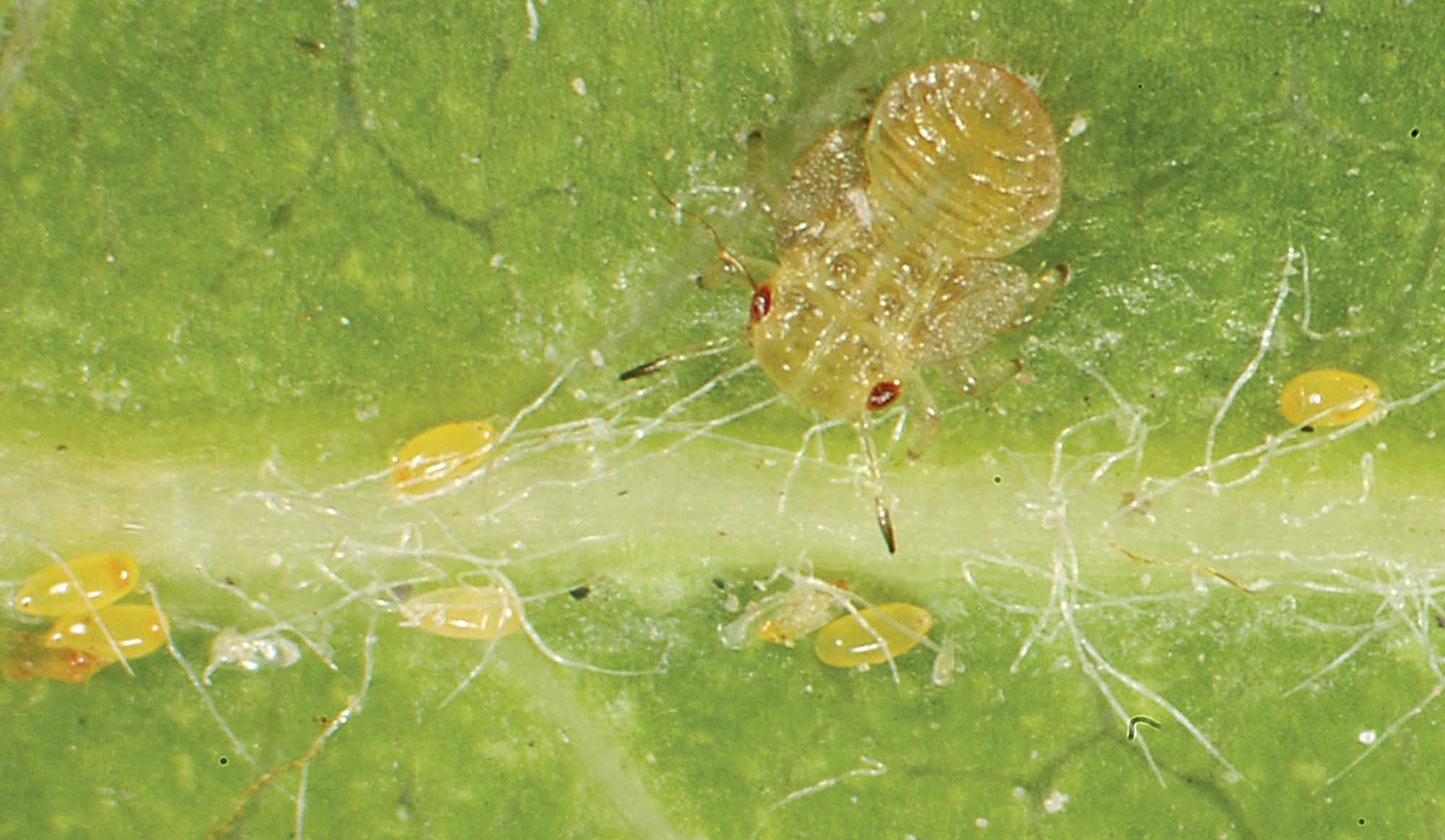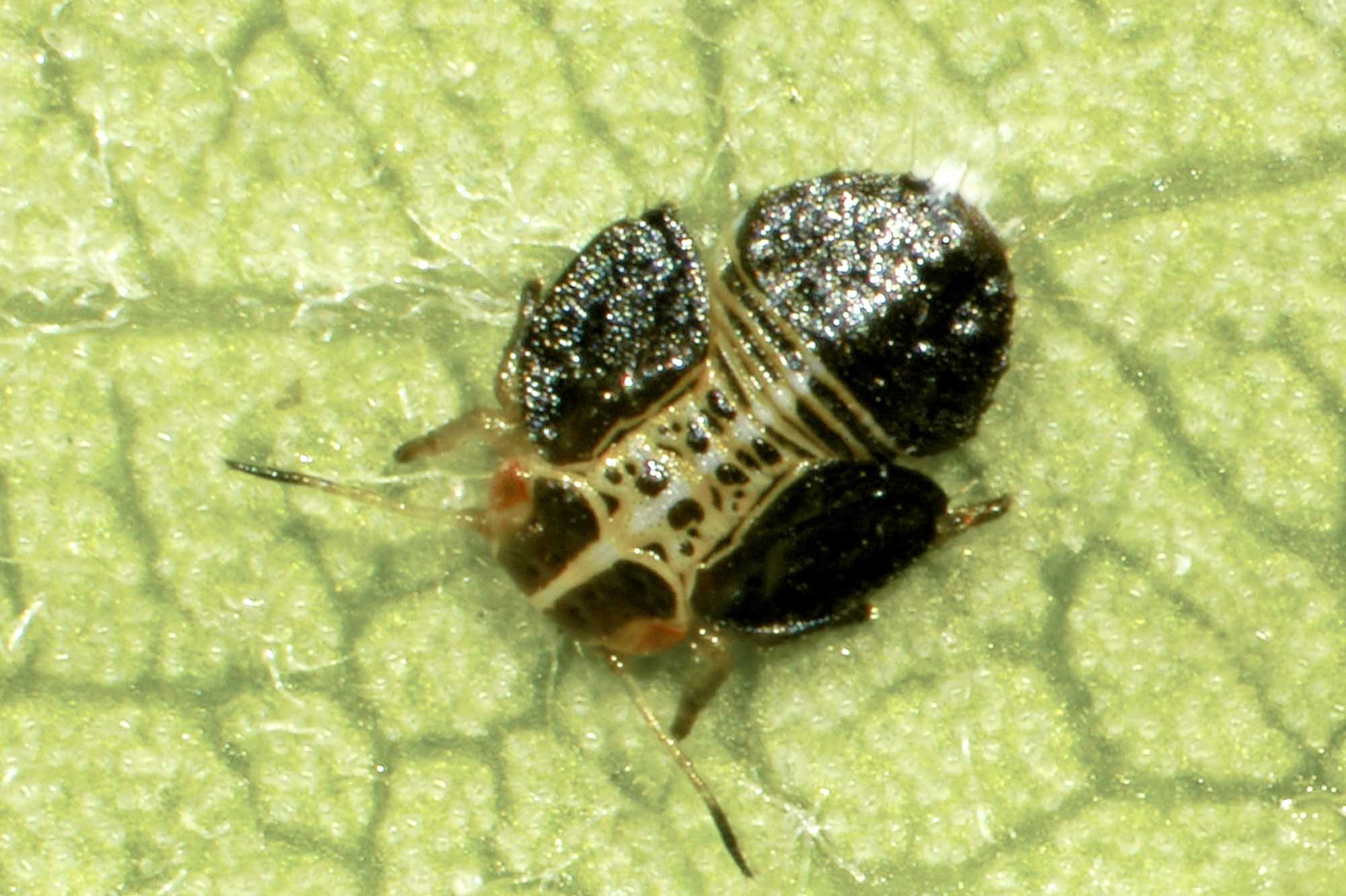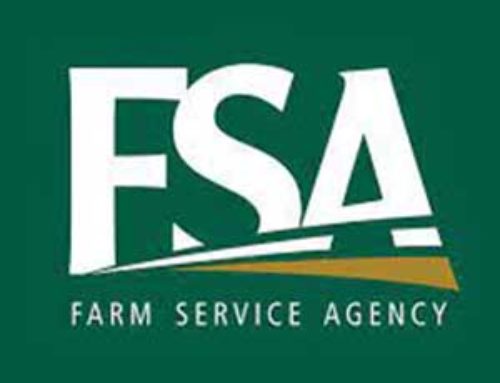
Early instar pear psylla nymph and eggs. (Courtesy Elizabeth Beers, Washington State University)
Pear psylla is a serious foe in Pacific Northwest orchards, accounting for more than half of a pear grower’s pest management expenses and about 20 percent of total nonfixed operating costs.
If not properly controlled, the pest can also downgrade fruit. Honeydew that the nymphs produce drips onto fruit and serves as a medium for growth of sooty mold.
It can sometimes be bad enough that it reduces photosynthesis significantly and makes the pear unsalable, Dr. Tom Unruh, geneticist, with the U.S. Department of Agriculture in Yakima, Washington, said at the North Central Washington Pear Day in January. “Honeydew is the bane of a grower’s life.”
Pear psylla has two distinct adult forms: a winter form that overwinters and a summer form that develops from eggs laid in the spring. Winterform adults are bright green when they first molt from the nymphal stage and then turn darker.
Their wings have a smoky patch. The summerform adults also are blue at molt, but turn more of a yellow color and have clear wings. They are smaller than the winterforms and less fecund.
Each fall, about 80 percent of the winterforms leave orchards for overwintering sites, sometimes feeding on apples or other deciduous fruits as they disperse. They are able to survive the winter on a wide range of plants, but do not reproduce on the other hosts.
They can be active during warm days in the winter, and they can feed from plants to get water, but do not mate or cause damage. Winterforms become much more active when the weather starts to warm up and the days become longer. In mid to late February, they begin returning to orchards to feed and mate.
“That’s when you start thinking about dormant sprays—about the time you start seeing some green show up on the ground of the orchard,” Unruh said.
When they return to orchards in the spring, they identify pear trees by a waxy coating on the branches, using receptors in their feet as well as their mouths.
By March, they start laying eggs on the base of fruit buds with oviposition increasing through bud swell and leafout. By bloom, eggs are still abundant and small nymphs are evident.
The abundance of psylla in the spring can vary greatly, and the way to keep them in check is to target the winterforms before they start laying eggs, Unruh said.
The overwintering psylla are much more susceptible to insecticides in the spring than they were in the fall, as they use up their fat body to sustain themselves while not feeding during the winter.
Unruh warned that psylla populations increase more rapidly on trees with high nitrogen levels and lots of suckers.
“Pear psylla is a nitrogen junky, and maybe some of our growers are, too,” he said. “It’s clear from work done here in Washington and other countries that your pear psylla abundance increases when there’s a lot of nitrogen.”
It’s not uncommon to see pear trees with three- to seven-foot-tall shoots growing up from the top, and those are breeding grounds for psylla, he said, suggesting that a plant growth regulator, such as Apogee (prohexadione calcium), might be used to limit that upright growth.
Monitoring

Fifth instar pear psylla nymphs, like this one, are called hardshells. All stages of psylla have distinctive red eyes. (Courtesy Elizabeth Beers, Washington State University)
The easiest way to sample for pear psylla adults is with beating trays, Unruh said. Returning adults are not attracted to colored traps, though summerforms do respond to yellow traps.
Scientist Dr. Cristelle Guédot, formerly with the USDA in Yakima, discovered that pear psylla has a pheromone that attracts males and could be used for monitoring.
Unruh said there is ongoing research by Dr. David Horton and colleagues with the USDA to discover the potential for combining the pheromone with a toxicant as an attract-and-kill form of control.
The aphidlike nymphs that hatch from the eggs develop through five instars. Typically, in Washington, there are two or three generations of summerform psylla.
By August or September, nymphs destined to be winterform adults start to develop. They leave the orchard in late September and October.
Historical studies suggest that psylla can move up to six kilometers (3.75 miles) over the course of leaving and returning to orchards, Unruh said.
Their dispersal ability can promote the spread of resistance to pesticides among orchards.
Unruh and Horton from the USDA and Vince Jones from Washington State University in Wenatchee conducted a study to find out if biological control of pear psylla could be improved by planting a ground cover that would provide habitat and other food sources for predators of psylla, such as Anthocoris and Deraeocoris bugs, ladybugs, green lacewings, and spiders.
The study was conducted in an experimental Bartlett pear orchard with alfalfa planted in the alleys and compared to trees with traditional orchard grass understory.
The scientists monitored the movement of the predators and analyzed their gut contents to find out what they had been feeding on.
The alfalfa cover crop had significantly more predators than did the orchard grass ground cover.
On trees above alfalfa ground cover, there were slightly more predators than on trees with grass ground cover, but the number of pear psylla also increased in trees in the alfalfa plots, resulting in a similar predator-to-prey ratio in the trees in both ground cover treatments.
The increase in psylla in trees with the alfalfa ground cover may be explained by an increase in leaf nitrogen in those trees.
Thus, while there was some movement of predators, particularly lacewings and ladybeetles, between the orchard floor and the trees, there were no striking differences between alleys with the alfalfa cover crops or grass.
When the concept was tested in commercial organic orchards, there was minimal build-up of natural enemies in the alfalfa, probably because frequent mowing kept alfalfa plants small and increases in leaf nitrogen did not consistently occur. Densities of both pests and predators in the trees were low.
“These results were not what we expected,” Unruh told the meeting. “We didn’t increase biocontrol enough to make a difference. What we did do is become determined to try again someday.” •






is abamectine kills psylla?